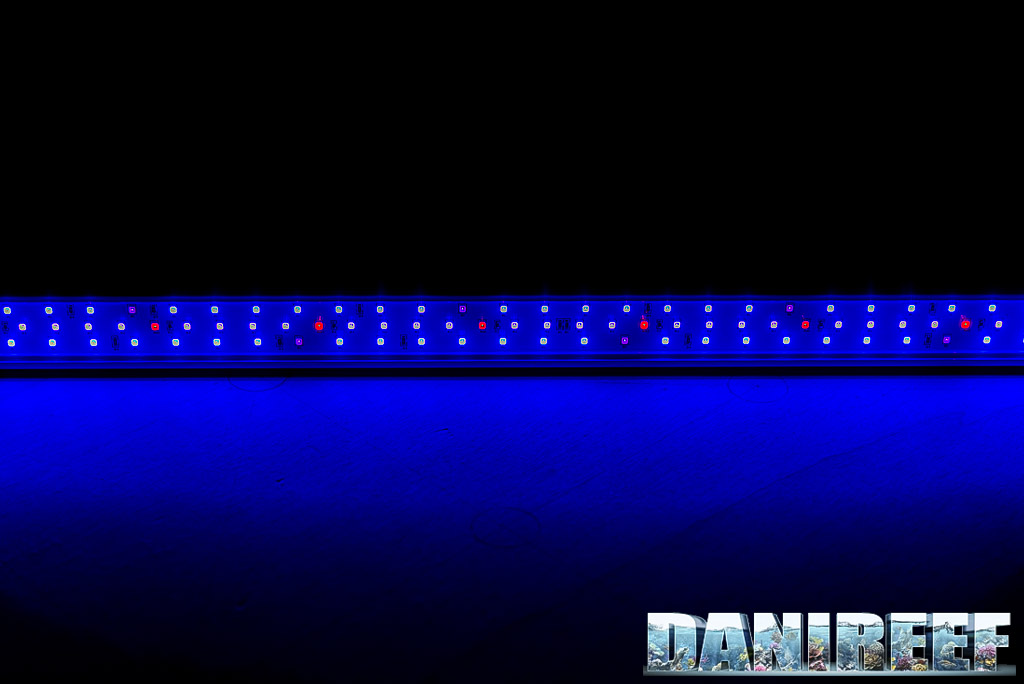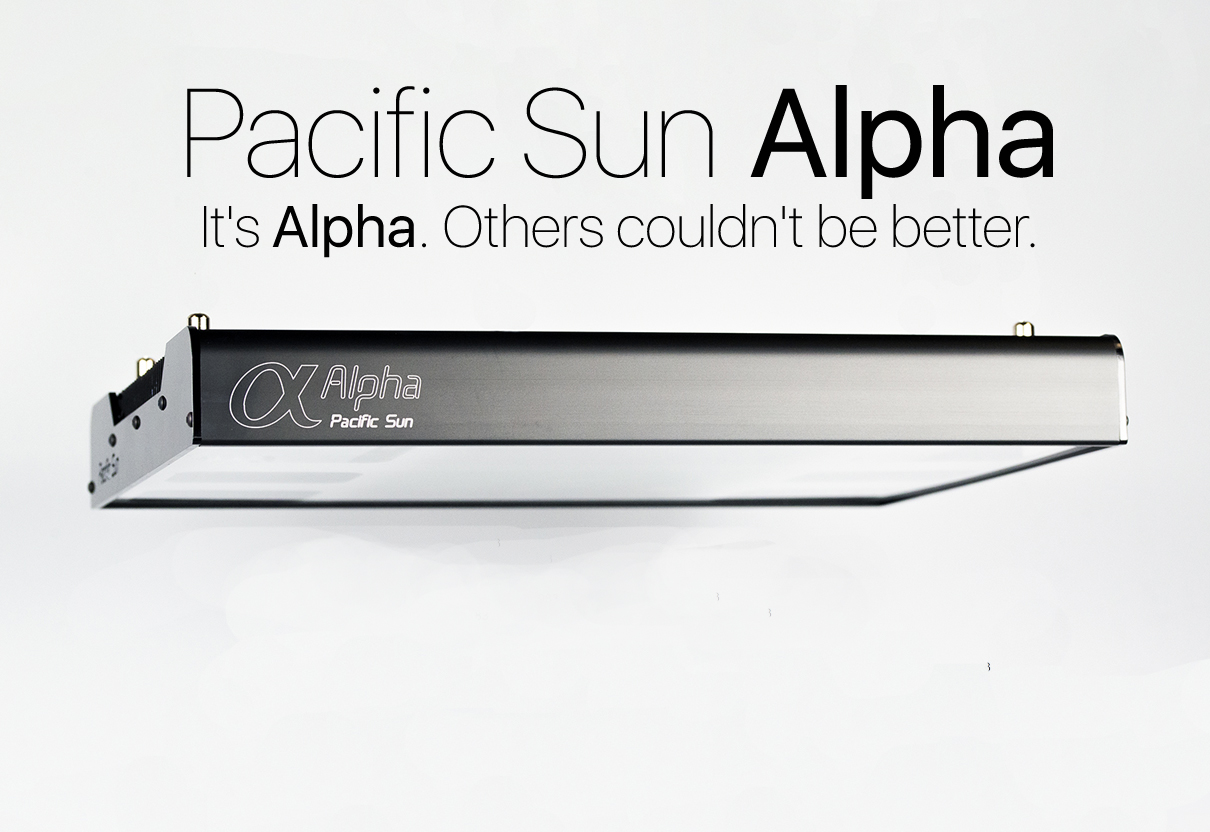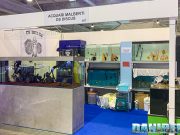 As you already know we’re testing the Philips CoralCare on our aquarium.
As you already know we’re testing the Philips CoralCare on our aquarium. ![]() Lo stesso articolo è disponibile anche in italiano.
Lo stesso articolo è disponibile anche in italiano.
We can’t show you a complete review for the moment, but we can share what we have discovered until today. Let’s begin with the analysis of CoralCare peculiarities.
Philips CoralCare technical specs
Each ceiling light owns 104 leds. Its declared power is 190 watt. All the leds are by Philips Lumileds and are arranged in this way:
- 40 x Luxeon TX 6500K/70;
- 32 x Luxeon T Royal Blue;
- 16 x Luxeon UV 420nm;
- 8 x Luxeon Rebel Cyan;
- 8 x Luxeon Rebel Phosphor Converted Amber.
Here below there are the two channels in which the leds are divided:
Channel 1:
- 32 x Luxeon T Royal Blue
- 16 x Luxeon UV 420nm
Channel 2:
- 40 x Luxeon TX 6500K/70
- 8 x Luxeon Rebel Cyan
- 8 x Luxeon Rebel Phosphor Converted Amber
Dimensions
- Length: 45 cm
- Width: 35 cm
- Height: 10 cm
- Weight: 10 kg
Selling price: 749 euros
This is the look of the CoralCare ceiling light with the optical elements in front of the leds: they spread the light with an angle bigger than 63°.
The Duration
Philips ensures an incredible durability of their ceiling light. In fact the Leds (of 3 watts and 5 watts) are controlled with a low electricity and in this way they can sustain over 25.000 operation hours. Specs show that, if they are used in spaces with temperatures lower than 35 degrees at the 100% of their power, after 25.000 hours, 90% of the ceiling lights is still having 80% of its original power. And obviously each change in the use will reduce or increase the duration. With an average use of more or less 12 hours, it’s like 4 hours a day with the full power of the ceiling lights. It’s almost 6.249 days of work, just about 18 years. Impressive isn’t it?

Construction
The Philips CoralCare has an excellent workmanship, even if the design isn’t so appreciated, especially here in Italy. But remember that the power supply of the ceiling light is placed into the shell, and this has noticeable effects on the use: first of all we have not to worry about the lack of space in our piece of furniture; in second place, they will always work at the best of their possibilities because they can disperse the heat in a open space.
The Planning
The software is just for Windows and it doesn’t work with wifi. It’s planned to have only two available led channels with specific limits. In fact it isn’t possible to do too strange combinations for not ruining the corals.
Lunar phases aren’t contemplated and the minimum brightness it’s too intense for a nocturnal use. It’s impossible also to set a period of adaptation. But considering that we’re talking about spread light it shouldn’t be a problem.
But the setup is extremely simple, and literally it is. For certain users it’s important to have the security of not doing mistakes. You have only to set the color point, upon cold or warm tones, intensity, time, and there’s even the help of a graphic for creating the perfect planning.
Here above there’s my actual planning. It starts at 10:00 am with only the blue light and at 11:00 am turns on the white one. At noon the white light increases until 4:00 pm, with its maximum. Then it symmetrically decreases and until midnight it continues with only residual light.














